How to make a portable speaker with your own hands?
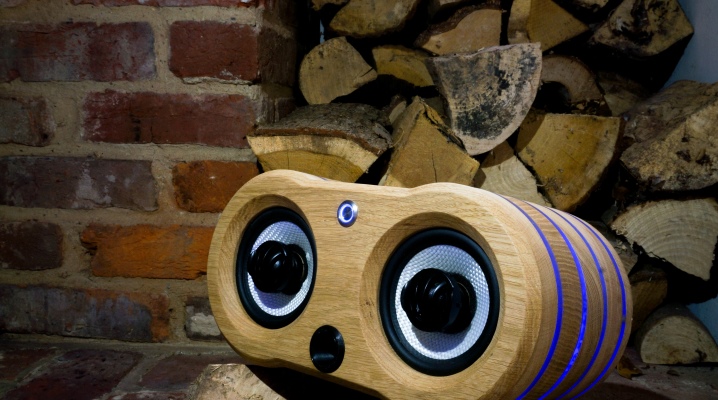
On the shelves of shopping malls and on the pages of online stores, you can now find hundreds of different models of portable speakers. But what if you can't choose something that suits you in terms of design, characteristics and price? Of course, make a portable speaker with your own hands.
Fortunately, this is not so difficult, and most importantly, it is much cheaper than ready-made options. You can create a design that suits you.

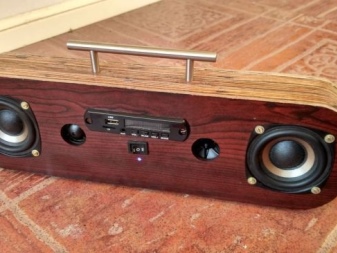
Tools and materials
Although a homemade speaker can be made from both a car radio and a sewer pipe, we will consider three methods of making a portable speaker with our own hands: from a PVC pipe, from old wired computer speakers, and assembled completely from scratch. For each method we need different parts:
- broken Wi-Fi router or a case from it;
- the angle of the ventilation pipe, the diameter of which is not less than 100 millimeters;
- 2 speakers;
- Light-emitting diode;
- resistor 100 ohm;
- battery (both a new one and one left over from an old phone will do);
- mp3 speaker from AliExpress;
- 5-volt amplifier, which can also be purchased in the Chinese market;
- battery charging module;
- various wires;
- switches;
- old speakers;
- charge controller with built-in protection;
- class D amplifier;
- Bluetooth module;
- 12 self-tapping screws 2.3 x 12 mm;
- dense double-sided tape (preferably foam);
- plywood;
- a can of varnish to protect the body.


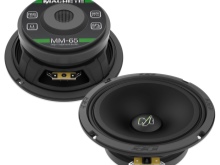
All methods will need the same tools:
- crosshead screwdriver;
- drill;
- Forstner drill;
- jigsaw and construction knife;
- glue gun and PVA glue;
- soldering iron;
- sandpaper.
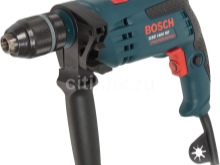
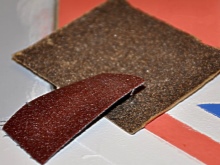
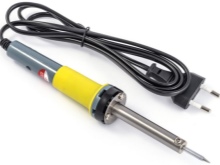
Manufacturing methods
Each method has its own assembly algorithm, so we will analyze them separately.
Making a column from PVC pipe
- Disassemble the case of the Wi-Fi modem. It will serve as a case for the future speaker.
- At the edges of the top make two holes for the switches, as in the photo.
- If you want, you can make a couple of holes in the upper part of the pipe and fix the antennas from the router in them... Subsequently, they can be used as a signal amplifier.
- Make holes in the lid of the router and in the pipe, through which the wires will pass, as well as 2 additional ones for fastening the pipe.
- So that the speakers are not damaged during operation, they will need protection. It can be purchased separately or made yourself from a special mesh trim for car windows. Place the speakers on the grid and make a circle around each speaker with a space of about 3-4 cm from the edge of the speaker.
- Cut them out... Using heavy thread and a needle, pull the mesh around the speaker so that you can feel the tension on the front of the speaker.
- Mounting the speakers in the tube can be achieved with hot melt glue or small self-tapping screws, if the diameter and thickness of your pipe allows it.
- Solder the audio wires to the speaker terminals. They are usually glued in pairs, so they are easy to recognize.
- As for the electronic part, everything is simpler here.... In the front part of the router case, we cut out a place for the mp3 module and fasten it in any convenient way.
- Solder all electronic components together as shown in the diagram.
- Now you need install the system power connector... You can put it in the hole where the router's power port was if it fits, or cut out a new one.
- Now it's time for the column-on indicator. For this we take a resistor and a diode.We solder one end of the diode to the resistor, and the other to the battery. We attach the resistor to the power button. It is needed in order to adjust the brightness of the diode. Install the diode in a special hole for it.
After you have soldered everything, check the column for performance and assemble the case. As a result, you will have an original column, assembled by your own hands.
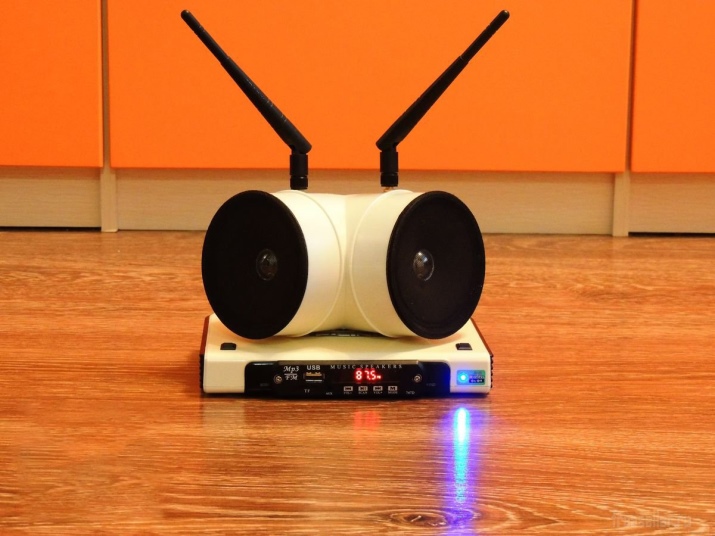
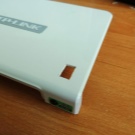
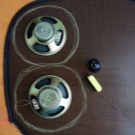
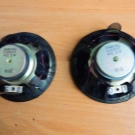
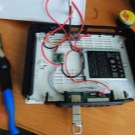
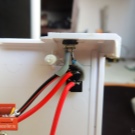
Portable speaker from old computer speakers
- Disassemble the column and immediately unsolder the power wire and transformer. They will no longer be needed.
- To provide power for the future column need a lithium-ion or lithium-polymer battery, depending on what you have available.
- To charge the battery itself, you need a charge controller... It can be ordered inexpensively on AliExpress. Choose one that has deep discharge protection. The battery is connected to the terminals marked B + and B-, and the load is connected to OUT- and OUT +.
- In the sole of the column cut a hole for the charging port, located on the charge board. The board itself can be glued to double-sided tape, but for reliability, fix the port with hot glue.
- In standard speakers, the power wire is connected to a transformer, and from there to a diode bridge. We solder all 4 diodes.
- Soldering the wires from the charge controller directly to the diode bridge, observing the polarity.
- We did not touch the buttons for turning on and adjusting the volume of the acoustics, so you don't have to fiddle with them. We just glue the board to the bottom of the speaker, and the battery and charge controller to the back.
- It remains only to collect the column... It will work through the AUX-wire. If you need it to work via Bluetooth, you need to add an appropriate element to the system.
This is the easiest way to make portable speakers due to the fact that almost nothing needs to be re-soldered. If the sound quality of the native speakers of the speakers does not suit you, you can always replace them with more powerful ones.
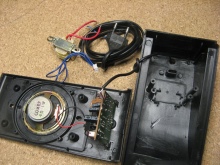
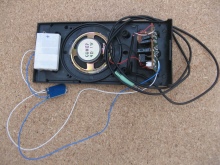
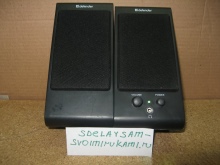
Wireless plywood speaker at home
- The first thing to do is these are the front and back panels of the speaker. They are made from 3mm plywood according to the diagram below. They can be cut on a special machine or manually with a jigsaw. It is not worth saving on the quality of the material, because this will directly affect the appearance of the product.
- To make the middle parts of the column, you will need 3 layers of 12 mm plywood. On a sheet of material, circle any (back or front) workpiece. Cut 2-3 mm back from the edge. Sand the uneven contour with sandpaper to the pencil line.
- Now you need to make an inner contour on them., step back from the edges 6-10 mm and draw it. This will be the thickness of the case. It is enough to keep the speaker strong.
- With a Forstner drill make 4 holes in the corners... To prevent the plywood from cracking, do not make holes immediately through. Better to drill half the depth on one side of the workpiece and the other on the other side of the part. Repeat with the other two frames as well.
- Use a jigsaw to cut the inner contour along the pencil line.
- Polish inner sides of the frames. Now you can start gluing them. Using PVA glue, connect the front panel of the speaker and the 3 inner frames together. Press down on them and allow excess glue to flow out. Remove it with a rag.
- Clamp the glued body between two sheets of plywood and fix it with a vise. Leave until the glue is dry.
- Once the glue has dried the case can be taken out. Place the back cover on the case and fix it again. Mark the symmetrical holes for the self-tapping screws. Drill two holes at opposite ends of the product and screw the self-tapping screws into them. Remove it from the vise and drill the rest of the holes.
- Again sand the body with fine sandpaper. At the top, drill a hole to fit your power button.
- Cover the case with matte varnish from a spray can, do not forget about the back cover.
- Put the speakers in place and fix them with hot melt glue.
- Solder all the insides of the future columnreferring to the diagram below.
- To the back wall bring out all the necessary ports and diodes.
- Place the parts inside the case, glue them on hot melt glue and screw the lid back on.
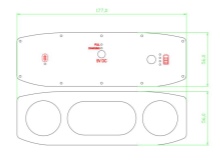
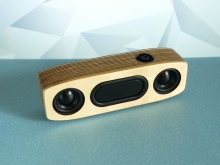
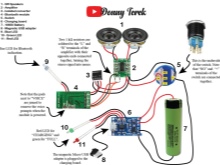
Recommendations
- So that you have a powerful portable speaker, take care of the quality of the speakers and their sound range... The human ear perceives sound between 30 and 20,000 Hz.
- When choosing a battery pay attention to its volume. You should not choose a model less than 3000 mAh.
- Best speaker enclosure - wood and everything that is produced from it (plywood, chipboard, cardboard). From them, you can come up with rather unusual solutions.
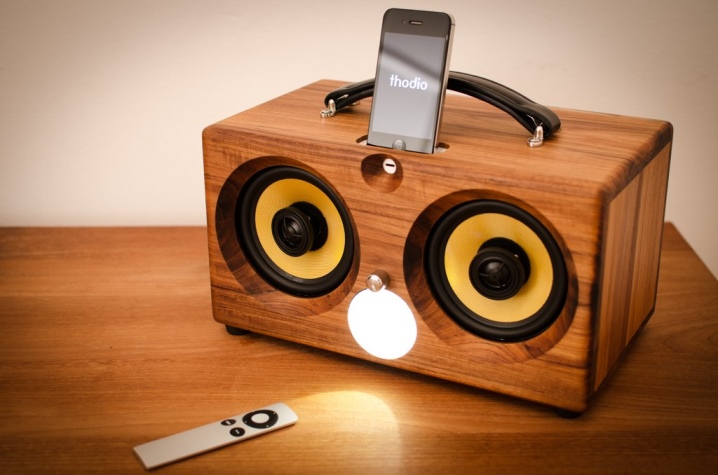
For information on how to make a portable speaker with your own hands, see the next video.













The comment was sent successfully.